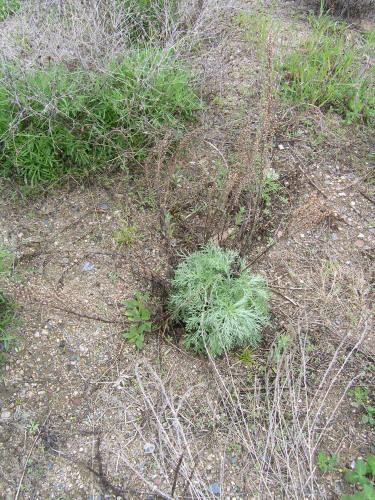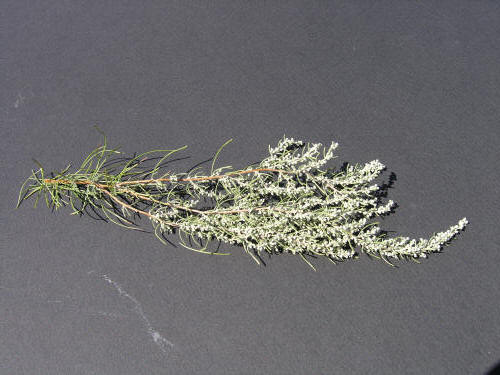Field Sagewort
Field Sagewort, Beach Wormwood
Artemesia campestris ssp. caudata (Michx.) Hall & Clem.
Asteraceae (Aster Family)

▲ seedling

▲ ▼ first year growth

▲ ▼ second year growth prior to flowering (dead flowering stems visible in above photo)

▲ mature flowering plant

▲ ▼ flowering stems
▲ ▼ flowering stems

▲ leaf
Artemisia campestris ssp. caudata (Michx.) Hall & Clements, Field Sagewort, Beach Wormwood: (Bayer Code: ARTCC; US Code ARCAC)
- Biennial or short-lived perennials, with flowering stems growing 1-3 feet tall
- Forms a rosette of gray-green basal leaves the first year
- Basal leaves finely-divided, fernlike, usually with little or no odor
- Sends up a flowering stem that is more branched toward the top, with tiny green, not showy flowers in axils of leaves
- Native plant, found in sand, infertile soils; more common in northern Midwest
- Found in sandy soils, on prairies, beaches, disturbed sites; more common in northern Midwest
- In early stages, is somewhat similar to absinth wormwood, but field sagewort has more linear leaf segments than absinth wormwood
- Is also similar to wild tarragon, but wild tarragon has linear leaves that are not divided into smaller segments
- Can be toxic to livestock, but usually not consumed except in overgrazed areas
Native sagebrush/wormwood (Artemisia) species can provide valuable foot and habitat for many wildlife species, and so should not always be considered a weed in the sense that they should be controlled or eradicated.
Proper range management often allows for native species to continue as well as provide adequate grazing for domestic animals.
(Updated January 19, 2019)